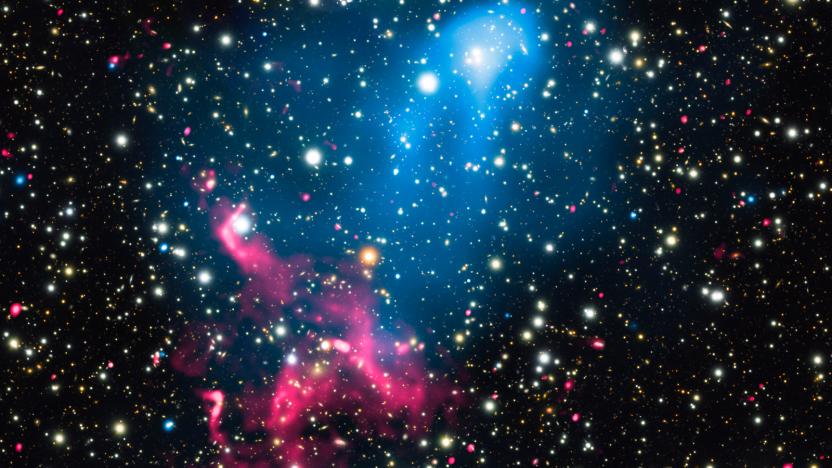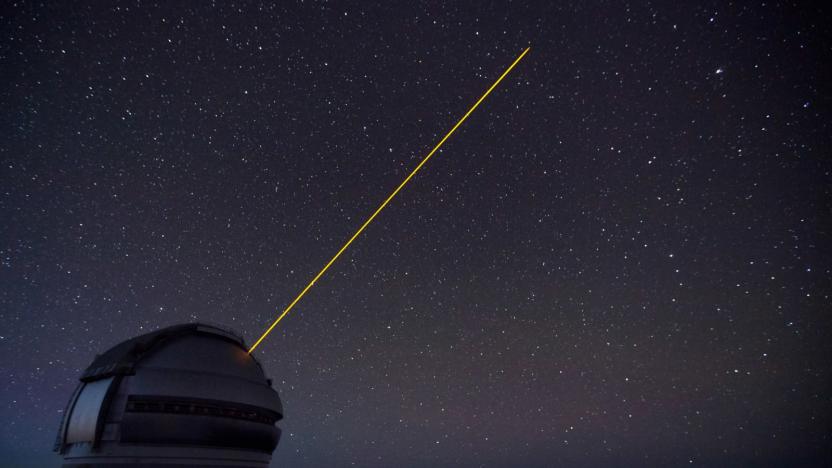verylargearray
Latest

Astronomers just measured a whole lot more than gravitational waves
A couple of weeks ago, the LIGO (Laser Interferometer Gravitational-Wave Observatory) and Virgo teams announced the detection of another set of gravitational waves -- the fourth since LIGO's first detection in September of 2015. The observations of these ripples in spacetime are extraordinary in and of themselves, no matter how many times we record them. However, while the first three sets of gravitational waves recorded were by the two LIGO observatories, the fourth was also detected by a newly established third -- Virgo -- located in Italy. And having three detectors allows researchers to triangulate the source of those waves with extraordinary precision.

Scientists discover a cosmic-scale particle accelerator
Suddenly, even the Large Hadron Collider seems downright quaint. Researchers have found a combination of cosmic phenomena that's creating the universe's largest known particle accelerator. At least one supermassive black hole in a galaxy cluster has created a electromagnetic tunnel that's accelerating gas to high speeds, only for the gas to travel even faster as it interacts with shock waves from another cluster colliding with the first. The result is particles traveling at a significant portion of the speed of light -- no mean feat for anything that isn't, well, light.

Scientists trace a cosmic radio burst to its home galaxy
Fast radio bursts in space have confused the astronomy community for years. What causes them, and where do they come from? At last, researchers are getting some answers. For the first time, scientists have traced one of these bursts back to its home galaxy. They first used the Karl G. Jansky Very Large Array radio telescope to pinpoint the object's exact location, and then used the Gemini North telescope to create an image of that patch of sky. The most surprising part isn't how they did it, though -- it's where the radio blasts are coming from.

